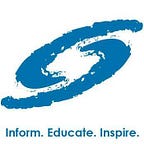How One Young Scientist Is Using Telemedicine To Help His Aunt Skip Doctor’s Appointments
By Mihir Patel, a senior at Thomas Jefferson High School for Science and Technology and a Regeneron Science Talent Search 2018 finalist
My aunt stepped through the front door, greeting me with a warm smile. As my cousins and uncle filed in behind her, I noticed something odd. Her entire left arm appeared to be bandaged and was swollen to nearly twice its original size. When I asked what had happened, she pursed her lips and explained that following her treatment for Hodgkin’s disease, she had contracted lymphedema.
Lymphedema, she explained, was a condition where fluid buildup in the immune system results in severe swelling. It commonly occurrs following cancer or severe injury and there is no cure — only treatment. She would now have to visit the doctor biweekly to track the swelling for the rest of her life.
On the day my aunt’s family left our house to travel back to New Jersey, I decided to do something. It was unacceptable for my aunt to have monthly doctor visits for the rest of her life. I would create a system letting patients self-checkup and remotely send vital statistics to their physician, removing this tiresome burden from their already difficult lives.
Thus, I entered the world of telemedicine.
As I researched my idea more, I stumbled upon this world jammed between computer science and medicine. With the advent of smartphones, a whole new market had been created for remote care. This $36.2 billion industry was exploding and searching for new ways to revolutionize the age old healthcare system.
My idea fit right into it.
In lymphedema, checkups involve measuring the volume of the arm, which serves as an indicator of the patient’s status. I could create a platform where patients would measure the volume of their limbs at home and enter it in my system. On the other side, the doctor could review this data along with all kinds of generated graphs and statistical values. The problem? Turns out volume measurement isn’t so simple.
Clinics estimate the volume of limbs through geometric approximations. The circumference of the limb is taken at fixed intervals and the approximation is done by constructing a truncated cone between every pair of measurements. This process turns out to have errors up to 10% even in clinical settings and is heavily dependent on the ability of the measurer. There was no way this approach would work if patients tried measuring themselves.
The solution, I decided, was to create a new approach. What if the volume could be calculated from pictures using smartphones? Over the following months, I developed algorithms capable of analyzing pictures to get the statistics I needed. My approach automated the process of generating truncated cone estimations and could do an order of magnitude more samples.
However, things truly got interesting when I ran into the problem of camera skew. When someone takes a picture of something, there can be a slight angle causing distortion in the image, greatly impacting final results. After several weeks of trying various ideas, I created an approach to correct this issue. My method used a printable background sheet with four markers, which are used to analyze the magnitude of the skew and correct it using linear algebra transformations. This method could remove camera tilt error from almost all telemedicine and computer vision applications.
The magical thing about computer science research is, for the most part, it doesn’t require laboratories or fancy equipment. I never applied to any summer programs and never had any mentor through this whole process. I just saw a problem and decided I would try to fix it. It took time, determination, and a lot of reading research papers, but it was doable. Now, however, it was time for testing and without access to a lab or patients, I was at a huge disadvantage. What doctor would let a high schooler conduct experiments on their patients?
Breaking this barrier has been a long struggle. I’ve sent too many emails to count and tried pitching my idea to nearly every person I know who is even remotely connected to the field. Progress, to put lightly, has been slow, but persistence has paid off.
Late last year, one of my teachers I’d been describing my project to told me she had artificial limb models. These models have been my saving grace, letting me run hundreds of tests and conclude that my approach achieves reaches a 3.5% error in volume measurement, surpassing current methods with errors reaching 10%.
As of right now, I’ve submitted my paper to the IEEE conference on telemedicine and for publication in the Elsevier Health Journal with these preliminary results. My hope is that publishing my research and results will help me secure a partnership with a clinic and move on to “real testing” so my work can make a difference. It’s been a long journey getting here, but I’m still pushing forward and the future is bright.
